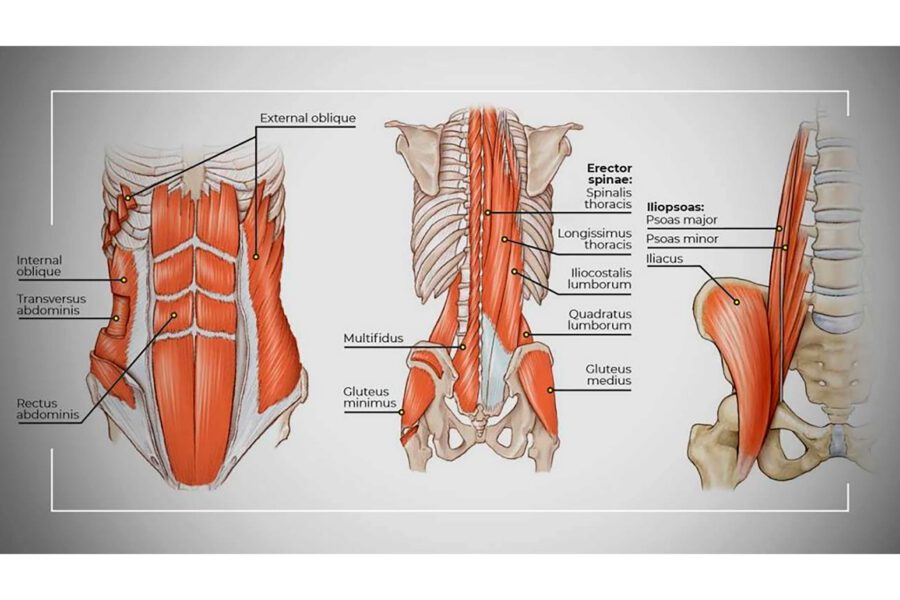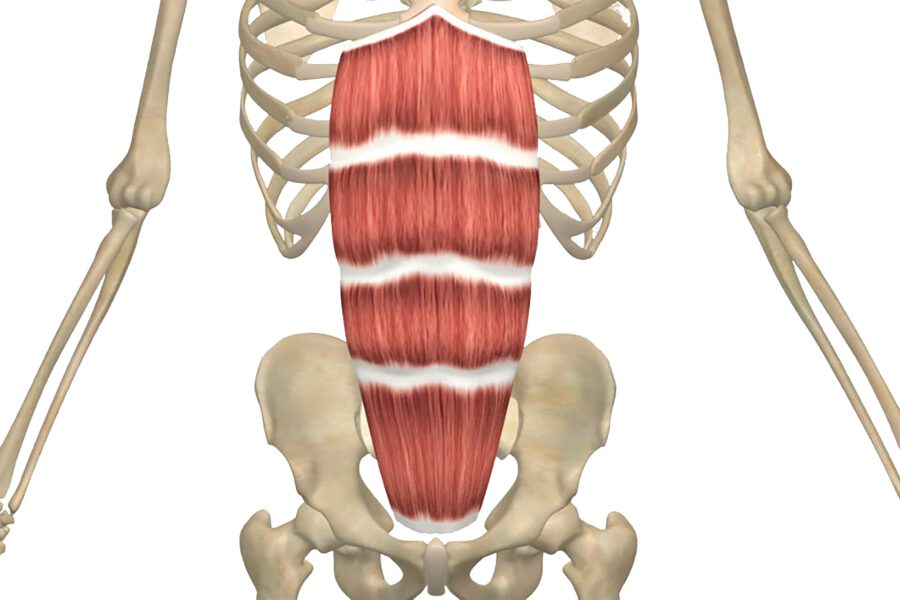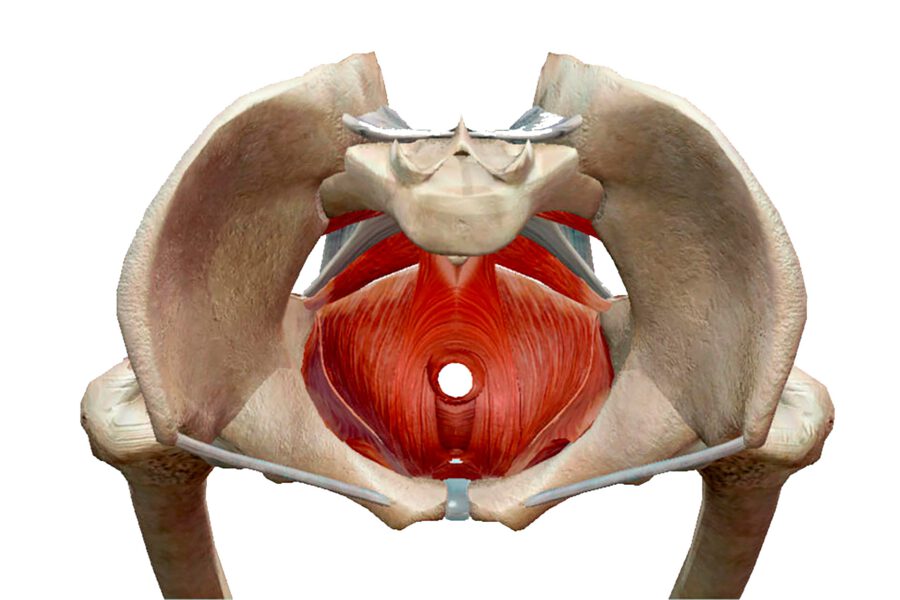7 Reasons Why Building Core Strength is Better than Six Pack Abs
You've been working hard on your abs, doing countless crunches and sit-ups to achieve that sought-after six-pack. Finally, you see the visible definition you've been striving for, but something feels off.
You start experiencing lower back pain, poor posture, and fatigue during everyday activities. These are the often-overlooked consequences of unbalanced training and focusing solely on training for aesthetic reasons.
Many people fall into the trap of believing that a six-pack is the ultimate goal of core training. However, this narrow focus can lead to muscle imbalances, increased risk of injury, and a lack of functional strength. The truth is, a six-pack is just one small aspect of a truly strong and healthy core.
This article will discuss why you can prioritize building a strong core and how you can safely implement training strategies to improve your core and six packs.
The core is a complex group of muscles that extend far beyond the abs you see in the mirror. Basically, the core spans the entirety of your midsection, front and back. These muscles work together to stabilize your spine, pelvis, and hips, providing a solid foundation for movement and force transfer throughout your body.
The rectus abdominis is the most well-known core muscle, often referred to as the "six-pack" muscle. It runs vertically along the front of your abdomen and is responsible for flexing your spine, as in a crunch or sit-up motion. While the rectus abdominis is an important part of the core, it is just one component of a larger system.
The transverse abdominis is the deepest layer of abdominal muscle, wrapping horizontally around your midsection like a corset. It helps stabilize your spine and pelvis, particularly during movement. When transversus abdominis is activated, it increases intra-abdominal pressure, which supports your spine and reduces the risk of injury.
The obliques are located on the sides of your abdomen and come in two pairs: the internal obliques and the external obliques. These muscles help with rotation and lateral flexion of your spine, as well as assisting in maintaining a stable core. The obliques work in coordination with the other core muscles to allow for smooth, controlled movements.
The erector spinae runs along your spine, from your lower back to your neck. These muscles are responsible for extending and rotating your spine, as well as maintaining proper posture. A strong erector spinae is essential for preventing lower back pain and injuries.
The multifidus is a series of small, deep muscles that run along your spine. These muscles help to stabilize your vertebrae and maintain proper spinal alignment. Weakness in the multifidus has been linked to chronic lower back pain and instability.
The pelvic floor muscles form the base of your core, support your pelvic organs, and contribute to overall core stability. These muscles work in conjunction with the transverse abdominis to create a strong, stable foundation for movement.
While not traditionally considered part of the core, the hip flexors play a significant role in core function and stability. These muscles, which include the iliopsoas and rectus femoris, help to flex your hips and stabilize your pelvis during movement. Tight or weak hip flexors can contribute to lower back pain and postural issues.
Popular ab exercises often overly target the transversus abdominis and overlook key core muscles. Crunches, sit-ups, and similar exercises are often performed in high volumes with the belief that they will lead to a strong, defined core. However, overreliance on these types of exercises can actually be harmful to your body.
To make your six-pack or eight-pack abs more visible, focus on reducing overall body fat through a combination of proper nutrition and a well-rounded exercise program, rather than solely targeting your abdominal muscles.
Essentially, having aesthetic abs is more about losing stubborn fats and love handles. For men, visible abs typically appear at around 10-12% body fat, with a more pronounced definition at 6-9%, while women may need to reach 14-19% body fat for visible abs and 14-15% for deeper muscle separation. However, maintaining extremely low body fat percentages can be challenging and may not be sustainable or healthy for some individuals.
Good posture not only helps prevent pain but also projects confidence and improves overall body mechanics. However, excessive ab exercises, particularly those that involve repeated spinal flexion (such as crunches and sit-ups), can contribute to poor posture.
When performed in high volumes, these exercises can cause the hip flexors to become tight and shortened, leading to a condition called anterior pelvic tilt. This can result in lower back pain, reduced mobility, and an increased risk of injury during other activities.
Developing a strong core instead helps maintain proper posture and alignment. When all the muscle groups of the core are well-developed and balanced, they work together to keep your spine in a neutral position.
A strong core can prevent postural issues like anterior pelvic tilt, which can lead to lower back pain and other musculoskeletal problems.
Many traditional ab exercises place significant stress on the spine. Repeatedly flexing the spine under load can lead to spinal compression. Over time, it may contribute to the development of herniated discs or other spinal injuries. This is particularly concerning for individuals with pre-existing back issues or those who spend long hours sitting, as their spines may already be compromised.
A strong, balanced core protects spinal health. When core muscles are properly engaged, they help distribute forces evenly throughout the body, reducing stress on any single area.
This is particularly important during physical activities or sports that involve sudden movements, twisting, or impact.
By prioritizing core strength, you can minimize your risk of injuries such as lower back strains, hip problems, and knee issues.
While having a six-pack may be aesthetically pleasing, it does not necessarily translate to improved functional strength or athletic performance. Many traditional ab exercises are performed in a lying or seated position, which does not mimic how the core is used in real-life situations.
Overemphasis on these exercises can lead to a lack of functional core strength, limiting your ability to perform well in sports or everyday activities.
The core acts as a stabilizer that allows efficient and safe force transfer from the upper and lower body. By prioritizing core strength, you can improve your ability to perform functional movements like lifting, twisting, and bending with greater ease and efficiency. This translates to better performance in sports, as well as increased comfort and stability during daily tasks.
A strong core is essential for everyday activities and sports performance.
A strong core can also contribute to an improved quality of life.
When your core is functioning optimally, you'll experience:
- Less pain
- Greater mobility
- Increased energy level
These benefits can positively impact your mental well-being, boosting your confidence and overall sense of vitality. With a strong core, you'll be better equipped to handle the physical demands of daily life and enjoy a wider range of activities without limitations.
A strong core can help improve pain, increase energy level, and improve mental well-being.
How to activate your core?
Properly activating your core muscles, especially by maintaining a posterior pelvic tilt, is crucial for effective and safe core exercises.
To perform a posterior pelvic tilt:
- Stand with feet shoulder-apart or lie on your back with knees bent
- Tilt your pelvis backward
- Engage your lower abs while avoiding overarching your lower back
- Engage the core by drawing your navel towards your spine
- Brace your abdominal muscles
- Hold for 6-10 seconds
- Relax and move back to the starting position
- Repeat for 10-15 reps
Maintain a posterior pelvic tilt when performing core exercises to engage the core throughout your exercises. Focus on deep and even breathing and exhaling during the most challenging part of the movement. With regular practice, proper core activation will become more natural and automatic during various activities and exercises.
| Exercise | Parameters |
| Plank | 30-60 seconds x 3 sets |
| Side plank | 30-60 seconds/side x 3 sets |
| Bird dog | 10-15 reps/side x 3 sets |
| Russian twist | 30-60 seconds x 3 sets |
| Pallof press | 10-15 reps/side x 3 sets |
| Dead bug | 30-60 seconds x 3 sets |
| Hallow hold | 30-60 seconds x 3 sets |
| Cable crunch | 10-15 reps x 3 sets |
| Stability ball rollout | 10-15 reps x 3 sets |
| Cable wood chop | 10-15 reps/side x 3 sets |
Core strength goes far beyond aesthetics. Developing a strong, well-balanced core through comprehensive training can improve your posture, reduce the risk of injury, enhance athletic performance, and improve the appearance of your midsection, and unearth your abs section without sacrificing your health.
Remember, developing a strong core takes time. It is a gradual process that requires consistency and a balanced approach to nutrition and exercise.










